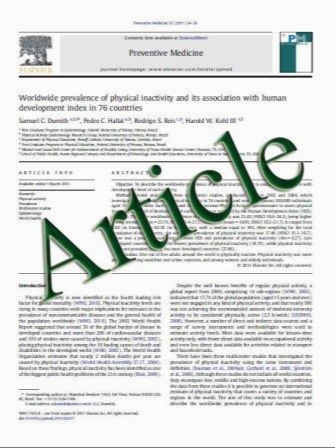MR Imaging of activated hepatic stellate cells in liver injured by CCl4 of rats with integrin-targeted ultrasmall superparamagnetic iron oxide
- نوع فایل : کتاب
- زبان : انگلیسی
- مؤلف : Qing-Bing Wang & Yu Han & Ting-Ting Jiang & Wei-Min Chai & Ke-Min Chen & Bing-Ya Liu & Li-Fu Wang & Chunfu Zhang & Deng-Bin Wang
- چاپ و سال / کشور: 2010
Description
Objective To demonstrate the feasibility of the ultrasmall superparamagnetic iron oxide (USPIO) modified by cyclo (Arg-Gly-Asp-Try-Cys) peptide (c(RGDyC)-USPIO) for targeting hepatic stellate cells (HSCs). Materials and Methods A c(RGDyC)-USPIO probe was prepared by conjugating c(RGDyC) with USPIO through a thiol-maleinide interaction. The specificity of c(RGDyC)- USPIO for HSCs was investigated in vitro. In vivo, normal and fibrosis rats were treated with either c(RGDyC)-USPIO or USPIO, and magnetic resonance imaging (MRI) of the rats performed after administration of the probes for 4 h. The T2 relaxation times changes before and after probe injection were analyzed and the locations of probes in normal or injured mice were identified histologically. Results The hydrodynamic size of c(RGDyC)-USPIO was 13±3 nm. HSCs took up more specific probes than plain ones. The reduction of T2 relaxation times in fibrosis rat by c(RGDyC)-USPIO was much greater than that by USPIO (P<0.05). Prussian blue staining and transmission electron microscopy of the injured rat liver treated with c(RGDyC) demonstrated that c(RGDyC)-USPIO were specifically engulfed by the activated HSCs. Conclusion In vivo cellular targeted imaging of activated HSCs in liver fibrosis using c(RGDyC)-USPIO targeting لvâ3 integrins was feasible using a clinical 1.5-Tesla MR system.
Eur Radiol (2011) 21:1016–1025 DOI 10.1007/s00330-010-1988-z Received: 6 May 2010 / Revised: 10 September 2010 / Accepted: 10 September 2010 / Published online: 25 October 2010


